WASH activities in South Sudan
28k views
boringdevelopment.com/2014/06/30/south-s...ts-baptism-of-blood/
(and other posts made on that blog)
Not really sustainable sanitation related though
Please Log in to join the conversation.
You need to login to reply- Elisabeth
-
- User is blocked
- Freelance consultant since 2012
Less- Posts: 3372
- Karma: 54
- Likes received: 932
Re: WASH activities in South Sudan
I think we are all very sad about the bad news coming out of South Sudan, with fights and civil war flaring up again. I really hope this is not the end of the hopeful chapter of a new South Sudan! A recent tweet by Cor reminded me of this thread that you once started to tell us about the GIZ (German Development Cooperation) work in WASH in South Sudan.
Could you, or someone else from GIZ, please give us an update on how things have progressed with these WASH projects since you last posted in 2012? And has everything been wiped out now with the renewed fighting (I hope not)? Is it still possible to carry on with these WASH projects or have all activities been halted? What has been achieved? What are lessons learnt?
I copy here the tweets I exchanged with Cor and others on twitter (this makes me wonder, by the way, how one could better integrate twitter and the Forum so that both can be used seemlessly together):
Here is the article in the Dutch newspaper translated to English by Google translate
(www.volkskrant.nl/vk/nl/2668/Buitenland/...dan-in-rook-op.dhtml)
Ministers Koenders and Verhagen visited Sudan in 2008.
Half billion Dutch support South Sudan in smoke
More than ten years of diplomatic efforts and more than 500 million development funds in the Netherlands are virtually nullified after six months of civil war in southern Sudan.
The Netherlands is one of the main drivers have been at the foundation of the world's newest state. But the "progress is broken in the bud," said Labor Minister for Foreign Trade and Development Lilianne Ploumen.
Figures that the Volkskrant has requested from Foreign Affairs shows that only Afghanistan cashed higher amounts in recent years. That had a lot, if not everything to do with the great military mission in Uruzgan province and the smaller police training in Kunduz. Received as much attention as the Afghanistan missions, so there was little interest - even in the Chamber - the money flows to Sudan, especially to the South became independent in 2011.
Critical debate lacked
MPs Bram van Ojik, leader of the Green, and Sjoerd Sjoerdsma (D66) argue that little attention is paid to critical reports of their own inspection of the Ministry, IOB (Policy and Operations). Wrongly Ojik of IOB's former director, Sjoerdsma worked with the Task Force Sudan at the ministry. According to Van Ojik the Chamber had "great sympathy for the birth of a new state." Thereby missing according Sjoerdsma 'critical debate. "
The civil war in southern Sudan has claimed thousands of lives since December, did a half million people to flee and now threatens to lead. Creating a famine Minister Ploumen recently dropped its support for aid programs in which the government of South Sudan is concerned, in favor of relief.
Aid donors 'unrealistic'
Already in 2010, a year before the independence of South Sudan, the IDB had negatively on the efforts of the Netherlands and other donors. 'The efficiency of the relief was limited. " Money was spent unbalanced. On the one hand, there was "very broad support" for the development of basic services (education, health), socio-economic development and humanitarian needs. On the other hand, there was "much more limited support for security in the broad sense and good governance, including the building of law enforcement and curbing gun ownership among the population." All in all, the 'intervention' donor 'too ambitious and, in fact, unrealistic.
The expectations were too high after Sudan and South Sudan "have gone their own way in a relatively peaceful manner in July 2011. In April 2013, nine months before the fight broke out, called the IOB the shaky security situation. "Violent incidents, whether economically, ethnically or politically determined, persisted. The widespread gun ownership among the population also gave rise to banditry. Army and Police (partly trained by Dutch soldiers, ed) were not very good at some things to curb. "
Regards,
Elisabeth
Freelance consultant on environmental and climate projects
Attachments:
-
 Twitter1.png
(Filesize: 91KB)
Twitter1.png
(Filesize: 91KB)
-
 Twitter2.png
(Filesize: 15KB)
Twitter2.png
(Filesize: 15KB)
Please Log in to join the conversation.
You need to login to reply- rahulingle
-
 Topic Author
Topic Author- Moderator
Less- Posts: 107
- Karma: 2
- Likes received: 18
UDDT are constructed in Chief Charles school in Yei. The new toilets stand in stark contrast to wall-less and roofless school building. A portion of the classes take place in a well built church room and in a dilapidated school building with broken walls and roof while the other portion attends school below the palm tree.

school by Sustainable sanitation , on Flickr
The school is managed by a local who unfortunately does not have much training or management experience. UDDTs were built in consultation with the school headmaster. However proper use of toilets was not enforced. the toilets are cleaned once a week and there is no water in the handwash facility during the dry season. of the 4 toilets constructed one was reserved for vistors, the second for the staff, the third and the fourth for boys and girls respectively. Urinals provided for the boys.
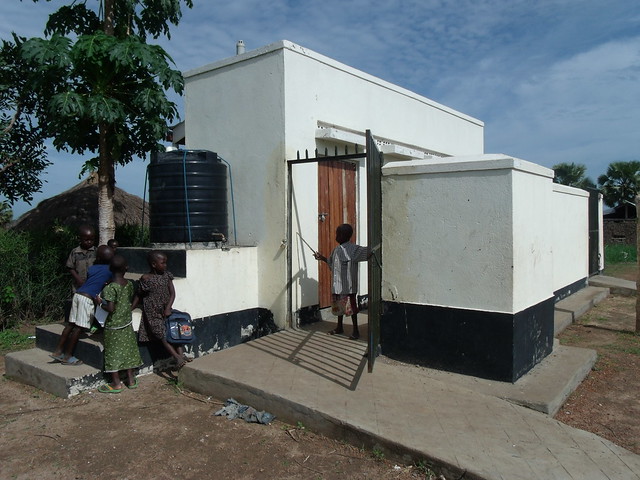
Toilet block by Sustainable sanitation , on Flickr
Both the chambers in the boys and giels toilet were in use at the same time. The cover for the defecating hole was kept on the urine collecting hole and the children were urinating and defecating in the defecating chamber.
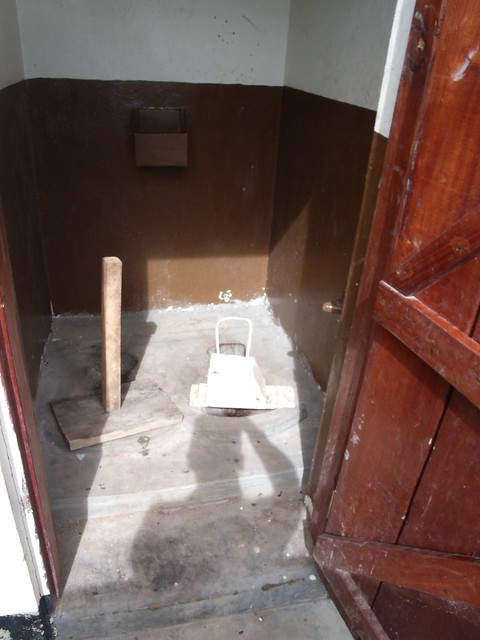
UDDT by Sustainable sanitation , on Flickr
There was no drying material such as ash, mud, paper or saw dust provided inside the toilets. The faces collection chamber was now a tank of wet faeces.

UDDT chamber by Sustainable sanitation , on Flickr
It was quite a learning experience especially with the case of UDDT toilets constructed in schools. Schools which have a poor internal management structure and do not have the capacity to enforce the proper use of the facilities should not be made pilot projects for UDDTs as they are the worst case scenario and bound to fail. Secondly only preaching better sanitation practices within schools does not help especially when the school staff is less motivated to continue the hygiene activities. I wonder if CLTS triggering should be carried out within school or SLTS (school led total sanitation). Thirdly its quite a behavioural change when the kids are used to peeing and defecating in the same hole as in a pit toilet which they use at home and then use a UDDT where they are supposed to pee and defecate in 2 different holes. When there is no constant information on the proper use of this toilet the UDDT chamber will end up being a tank of wet sludge as in the case of this school. I find the otji toilet much more appropriate in this case as it does not require behavioural change.
In a second case of UDDT toilets constructed in a primary school in Morobo, 2 blocks of 3 toilets with twin chambers were constructed. the toilets were constructed in 2011 but have not been in use. The staff and children use the neighbouring pit toilets. One o f the UDDT toilets is used ocassionally in cases of emergency.
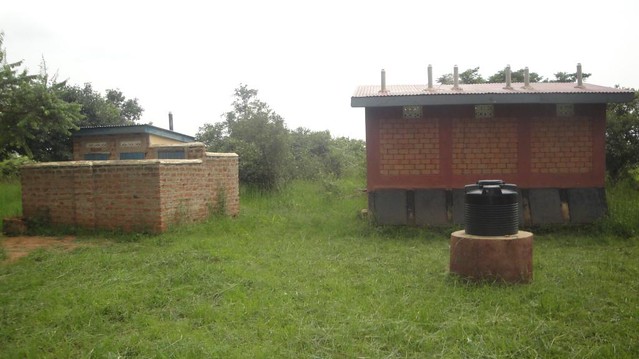
DSC04404 by Sustainable sanitation , on Flickr
In one of the toilets faeces was lying in the urine collection hole and had choked the pipe
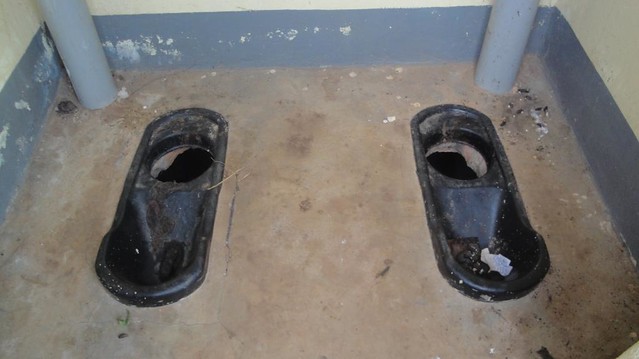
DSC04413 by Sustainable sanitation , on Flickr
On questioning the staff, they were not aware of the proper functioning of the toilets. they were bothered of the fact that they will not find anyone to empty the wet faeces. On explaining the concept one of the staff said if only he knew this they would have used the toilets. While in Khartoum, he had seen the Arabs use humanure which yielded huge tomatoes! Training of staff was done once the toilets were constructed. However the staff had changed and there was no knowledge transfer to the new staff. Also there was no information material provided in the toilet block on the functioning of the toilet. This was also the case in the first example.
Rahul Ingle
Please Log in to join the conversation.
You need to login to reply- ndivine
-
Less
- Posts: 17
- Likes received: 1
Re: WASH activities in South Sudan
this is really encouraging and inspiring for us to ensure similar Consultations are carried out and Implemented in our various regions as well.
Thanks once more for the great job...
Divine
Please Log in to join the conversation.
You need to login to reply- rahulingle
-
 Topic Author
Topic Author- Moderator
Less- Posts: 107
- Karma: 2
- Likes received: 18
There are 41 WASH Partners across all 10 states of South Sudan. 2 focal points in each state
Key Activities : Emergency response coordination, contingency planning for the referendum, sharing of best practices, development of standard tools, program mapping to ensure best coverage across South Sudan, facilitating relationships among all actors—UN, GoSS, donors, NGOs
Cluster meetings: last Tuesday of every month, 10 am, PACT office
Google Group: “Southern Sudan WASH Forum”
groups.google.co.ke/group/southern-sudan...-forum?lnk=srg&hl=en
Co-Leads: Medair, Jesse Pleger, WASH Advisor and Unicef, Douglas Graham, WASH Cluster coordinator
Contact: This email address is being protected from spambots. You need JavaScript enabled to view it.
Rahul Ingle
Please Log in to join the conversation.
You need to login to reply- rahulingle
-
 Topic Author
Topic Author- Moderator
Less- Posts: 107
- Karma: 2
- Likes received: 18
Most of the toilets constructed in schools are 'Trench' Pit toilets i.e Pit toilets having a single trench as pit. The toilet blocks are constructed without any urinals in most of the schools. As school toilets without urinals are used more for urinating than defecating, the contents of the toilets are therefore very fluid. For anal cleaning paper or leaves are used. However there is no availability of paper or leaves inside the toilets. On questioning I was informed that the students carry paper with them. However I rarely saw any student carrying paper or leaves. A lot of garbage was thrown inside the pits such as plastic bottles, wigs, plastic bags, glass bottles etc.

GEDC2664 by Sustainable sanitation , on Flickr
Some of the toilets are in a dilapidated condition. There are cracks in the base slab. As the pits are 2-6 metres deep it is very dangerous. Similar is the case with pit toilets built with wooden slabs. Also as the soil is loose there is a high chance for the pits to collapse if it is not properly lined from inside the pit.
The toilets are either cleaned once or twice a week by the students. Especially when approximately 200 to 400 students use one single toilet, more frequent cleaning of toilets is advisable. Flies infest in the pits and are seen going in and out of the pits and sitting on the edge of the opening.
The ground water table is said to be around 15m. So there is a safe distance between the pit bottom and the ground water table. However it rains heavily in this area and so the rise in ground water table can pose a threat. Moreover overflowing of the pits can pose a general health Hazard.
Desluding of the toilets is yet not an option as the desluding trucks are in Juba which is 160 kms or 4 hours ride to Yei. Moreover the charges for desludging is high and unaffordable to the local community. The schools therefore have to construct new toilets when full.
Rahul Ingle
Attachments:
-
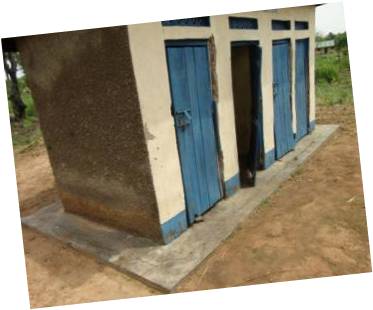 crackedslab.jpg
(Filesize: 16KB)
crackedslab.jpg
(Filesize: 16KB)
-
 flies.jpg
(Filesize: 11KB)
flies.jpg
(Filesize: 11KB)
Please Log in to join the conversation.
You need to login to reply- rahulingle
-
 Topic Author
Topic Author- Moderator
Less- Posts: 107
- Karma: 2
- Likes received: 18
In Yei town, there are 24 primary and 12 secondary schools. The school capacity varies from anywhere between 400 to 1600 students. On an average there are 900 students per school which comprise of approximately 500 boys and 400 girls. Some of the schools are in an extremely poor condition with very few classrooms with broken walls or roofs. Considering the fact that it has rains for almost 9 months a year of which 6 months of heavy rains the classrooms are in very poor conditions.
[url=

Some other have decent classrooms but are used beyond their capacity
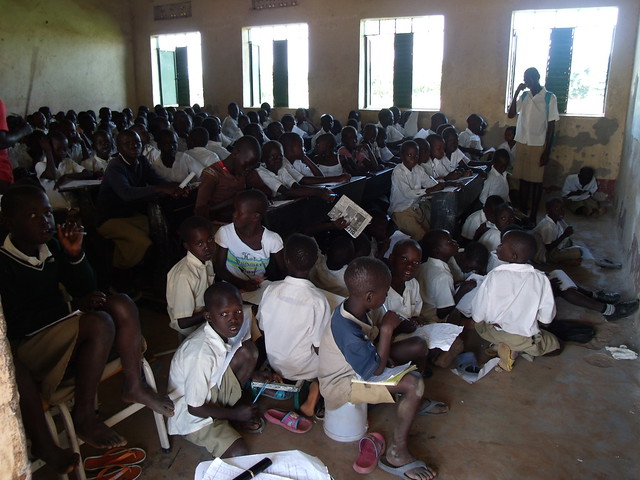
school classroom by Sustainable sanitation , on Flickr
The age group in the classes varies drastically as many students had to take refuge during the instability in the country and now back in school after having missed a few years of education. The age of the students in schools therefore ranges from 5 years to 28 years.
Sanitation and hygiene condition in the schools range from satisfactory to poor. NGOs as well as development agencies have tried to provide sanitation facilities. Most of the times a block of 4 toilets were constructed irrespective of the school size. the idea therefore was no to provide adequate toilets but to ensure the school has a toilet.
In almost all schools the toilets are inadequate for the number of students in the schools. Moreover, In the block with 4 toilets 50% toilets are reserved for the staff. During our interviews with school authorities, it was many a times mentioned that the staff toilet were inadequate but rarely mentioned if the toilets were inadequate for the students even when there was 1 toilet for every 10 staff while there was just 1 toilet for 400 students!
In some schools there were 2 toilets blocks of 4 toilets each constructed by the NGOs for boys and girls seperate with signs that specifically said so. however in reality a comeplete toilet block of 4 was reserved by the school for its staff while the other blocks was shared by the boys and girls.
Most NGOs or development agencies have funds to construct toilets for students but not for the staff. They expect the school to construct these toilets which never happens.
Whenever toilet blocks are constructed urinals are not included in the design and even if done only for the boys. In reality, the more the number of urinals provided less are the number of toilets required. most students during their break time go to urinate and not to defecate. therefore by providing urinals you reduce the pressure on the toilets.
In one of the schools we noticed they had provided poor sanitation facilities but had constructed a urinal for both boys and girls. see picture below
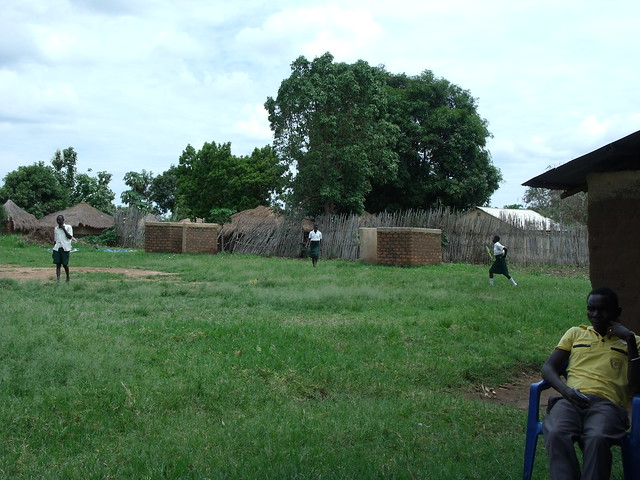
Boys and Girls Urinals by Sustainable sanitation , on Flickr
Most schools either do not have hand wash facilities or have hand wash facilities which are not functional.
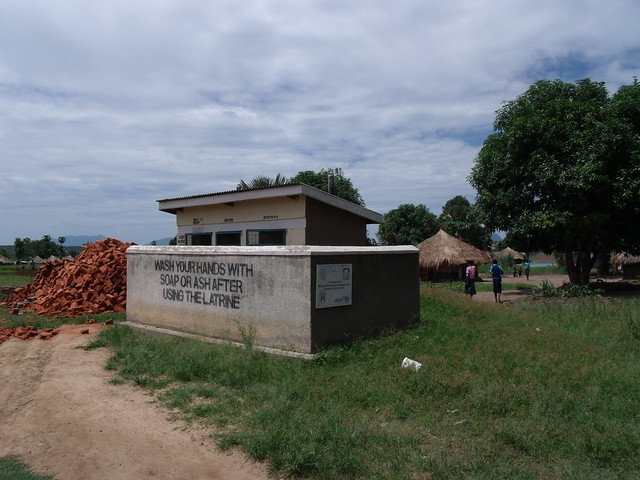
GEDC2662 by Sustainable sanitation , on Flickr
The irony in the above picture which says ' wash your hands with soap or ash after using latrine' is that there is no handwash facility in the school. Many handwash facilities are made of por quality material and therefore end up being broken. even though the cost of replacing a tap or a tank is way less than constructing a complete handwash facility the schools wait for donor NGOs to fix it. Good hygiene behaviour therefore is lacking in most schools.
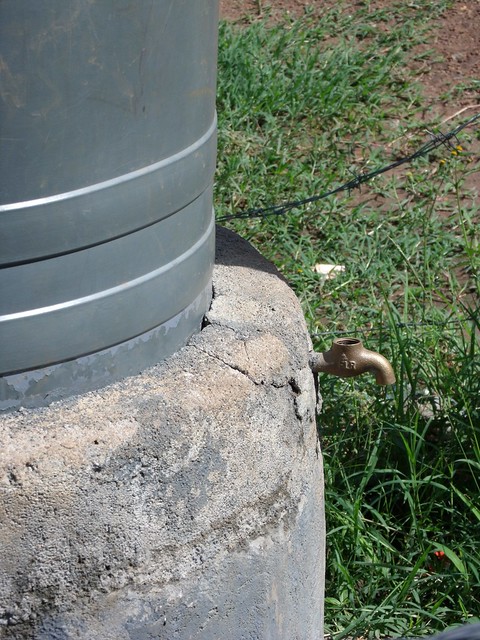
GEDC2792 by Sustainable sanitation , on Flickr
Toilets are cleaned 1-2 times a week by the students. Many toilets therefore are unhygienic from inside. Sometimes boys therefore end up urinating in the entrance passage of the toilets instead of inside the toilets as in the picture below.
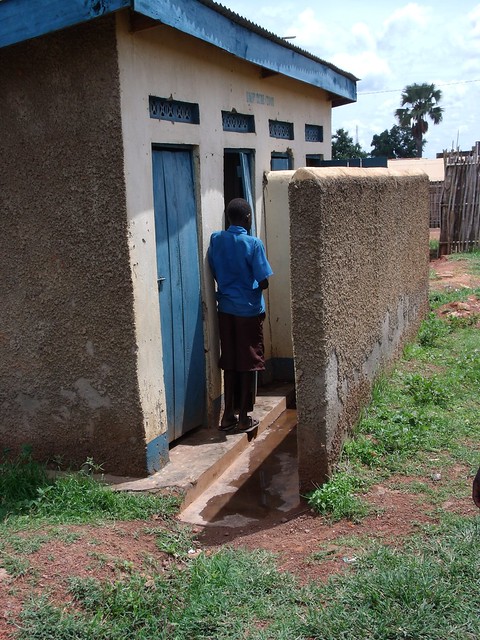
GEDC2829 by Sustainable sanitation , on Flickr
More on the type of toilets in the next post.
cheers
Rahul Ingle
Please Log in to join the conversation.
You need to login to reply- rahulingle
-
 Topic Author
Topic Author- Moderator
Less- Posts: 107
- Karma: 2
- Likes received: 18
Houses are very typical and made of either bamboo reinforced mud walls or with bricks. Almost 70% of the houses here are temporary houses. Houses are built in a cluster surrounding a central court and people live along with their extended families. The average household size here is approximately 8 members with 50% being kids.
www.flickr.com/photos/gtzecosan/sets/72157629746308628/
Open defecation is not common and people have pit toilets or VIP toilets. As per a survey 77% of the households have pit toilets while approximately 22% have VIP toilets. Once the pit is full presently there is no alternative of emptying it but to close the pit and open a new one. Awareness towards the need to have a toilet exists however there is lack of awareness towards good hygiene behaviour.
The people depend on either hand pumps for collecting water for household activities and drinking. However the number of such hand pumps are not sufficient as compared to the population and people have to resort to other sources of water like collect flowing or stagnated water. Many a times the pit toilets are located close to these sources contaminating the water.
www.flickr.com/photos/gtzecosan/71758627...et-72157629677543296
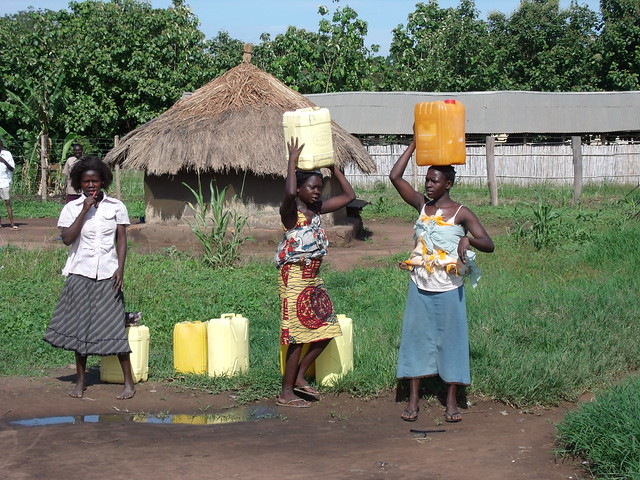
GEDC2754 by Sustainable sanitation , on Flickr
Rahul Ingle
Please Log in to join the conversation.
You need to login to reply- rahulingle
-
 Topic Author
Topic Author- Moderator
Less- Posts: 107
- Karma: 2
- Likes received: 18
Yei - South Sudan
Yei is a town located in the south of the country in the central Equatoria state close to the borders of DRC and Uganda. It is approximately 4 hours by car on an extremely bumpy road from Juba. The town in comparison to many other towns and cities in South Sudan is stable and developed. It's economy flourished due to its proximity to the Uganda until 1983. but the following years saw a lot of destruction. The town was conquered back by the SPLA in 1997. since the sign of the comprehensive peace agreement in 2005 between South Sudan and Sudan, stability is slowly been restored to this town and it's economy and population is growing. Today it is the most stable town in South Sudan and second most developed place next to Juba with a population of approximately 175,000 inhabitants.
In comparison to Juba which is hot and dry with very few trees, Yei is refreshingly green. The climate is a few degrees cooler. Agriculture, Trading and forestry are important activities. As they are involved in farming for sustenance, the town is better surviving the crisis than other places. It is therefore also possible to find fresh vegetables in the market!
Due to its proximity to Uganda which is around one and half hours from Yei, it has had a strong influence of development. Many of the locals go to Uganda for education. English, Kakwa and Arabic are the spoken languages but most of the people can only read and write in English.
Cattle is still considered as a property and a reason for inter tribal clashes in the country. Even though Yei is pretty peaceful, some such clashes come to the surface time and again.
@Elisabeth - I have not received any response from Peter Bury so do not know about IRC's activities in South Sudan. and yes, you are right the Indians here are the ones that have settled in Kenya or Uganda for generations and as per my knowledge there are very few cases of mixed marriages and children.
Rahul Ingle
Please Log in to join the conversation.
You need to login to reply- Elisabeth
-
- User is blocked
- Freelance consultant since 2012
Less- Posts: 3372
- Karma: 54
- Likes received: 932
Re: WASH activities in South Sudan
Thanks for your description of your first impressions there in South Sudan, very interesting! You said people don't like their photographs taken, does that also mean random photos on the streets are not allowed or just not the direct photos of a person?
I saw from Peter Bury's photos on flickr that IRC has done some support work in the WASH sector in South Sudan:
www.flickr.com/photos/bury_irc/sets/72157624506316905/
Are there any working relationships between the GIZ Water Program and IRC? Is IRC also focussing on sanitation? Perhaps Peter Bury could even post a reply here if you alert him by separate e-mail to this discussion thread?
Keep up the good work and continue to post here.
All the best,
Elisabeth
P.S. I had to smile at your names of Kenyan-Indians and Ugandan-Indians; are these Indians who have lived in Kenya and Uganda for more than a generation? Do you also see mixed marriages/children?
Freelance consultant on environmental and climate projects
Please Log in to join the conversation.
You need to login to reply- rahulingle
-
 Topic Author
Topic Author- Moderator
Less- Posts: 107
- Karma: 2
- Likes received: 18
It has been quite an interesting experience. I arrived in Juba on the 22nd April. From the plane the settlement in Juba looked like a widespread informal settlement around a hill and the Blue Nile on one of its side. White, blue and red dots marked the entire landscape. Most of the roads in the city are mud roads which makes it a very dusty place. It was just the start of the rainy season and there was water logging in many of the places. Just a week or two before I arrived the temperatures were around 45 degrees. Luckily, when I arrived it had started raining and the temperature had dropped to around 30-35 degrees.
Juba Capital city of South Sudan as viewed from the plane
Photo source: Peter J. Bury www.flickr.com/photos/bury_irc/4897204151/in/photostream/
The airport was full of parked UN planes and local soldiers. While landing on the runway, next to it I saw a soldier busy washing his clothes. All the South Sudanese are so tall that they can all qualify to be basketball players. As you enter the airport building there is quite a chaos. The visa process and the baggage claim continues parallel. The visa is given for only one month for 100USD and needs to be renewed again. Luggages are brought and dumped on the floor in the hall where the visa process takes place. The luggages were surrounded by a wall of tall Sudanese. I was bouncing between these two areas making sure I don’t loose my bags or my passport submitted at the visa counter. In that huge mess of luggages also stood the security officials counters where all the baggages are checked again. I came out of this chaos all drenched in sweat but happy to have got all my bags and the passport. The plans for a new Juba International airport are in the planning process.
I was surprised to discover my room was in a container. Containers prove to be practical due to the high cost of cement and the flexibility the containers offer as they can be assembled quickly and do not need major excavations and foundations. the room prices in Juba in a hotel are around 75USD onwards. The food is expensive in the hotels around 15USD onwards. Restaurants can be a bit cheaper around 10USD. Local food like Chicommando - a mix of chapatti, beans eggs or beef is very tasty and cheap, and almost the staple food of many locals. Indian food is available in almost all restaurants as most of them are owned by Kenyan-Indians or Ugandan-Indians. There are supermarkets where you get almost everything but is expensive as everything is imported from the neighbouring countries
The city is relatively safe. However there are quite some travel restrictions for expats especially for travel after dark and mid night curfew. There are a lot of international aid workers. There is high risk of malaria especially during the rainy season.
English and Arabic are two spoken languages. English though official language is not widely spoken. A lot many parents send their children across the border to Uganda or Kenya for education as they claim the education system in South Sudan is still not well established. The ones that study in the neighbouring countries are usually proficient in English.
More about the WASH activities in my next post so keep reading
cheers
Rahul
Rahul Ingle
Attachments:
-
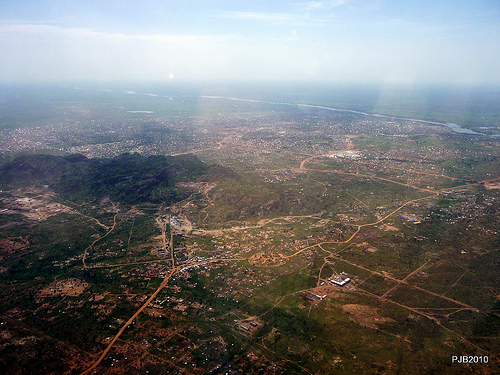 4897204151...cd18.jpg
(Filesize: 144KB)
4897204151...cd18.jpg
(Filesize: 144KB)
-
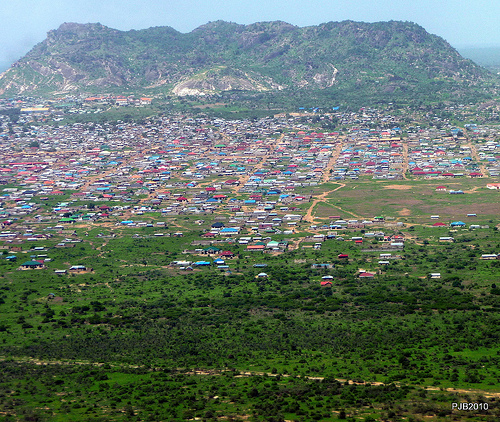 4897800484...9808.jpg
(Filesize: 241KB)
4897800484...9808.jpg
(Filesize: 241KB)
Please Log in to join the conversation.
You need to login to reply- rahulingle
-
 Topic Author
Topic Author- Moderator
Less- Posts: 107
- Karma: 2
- Likes received: 18
WASH strategy framework from the Ministry of Water Resources and Irrigation (MWRI) - final report
Please log in or register to see it.
Some pictures of the WASH activities in South Sudan
www.flickr.com/photos/bury_irc/tags/southernsudan/page2/
A resource of documents on WASH in South Sudan
docs.google.com/leaf?id=0B8mbMUsljUhtYzQ...k3YWJmZDM5&hl=en_GB/
cheers
Rahul
Rahul Ingle
This message has an attachment file.
Please log in or register to see it.
Please Log in to join the conversation.
You need to login to reply








